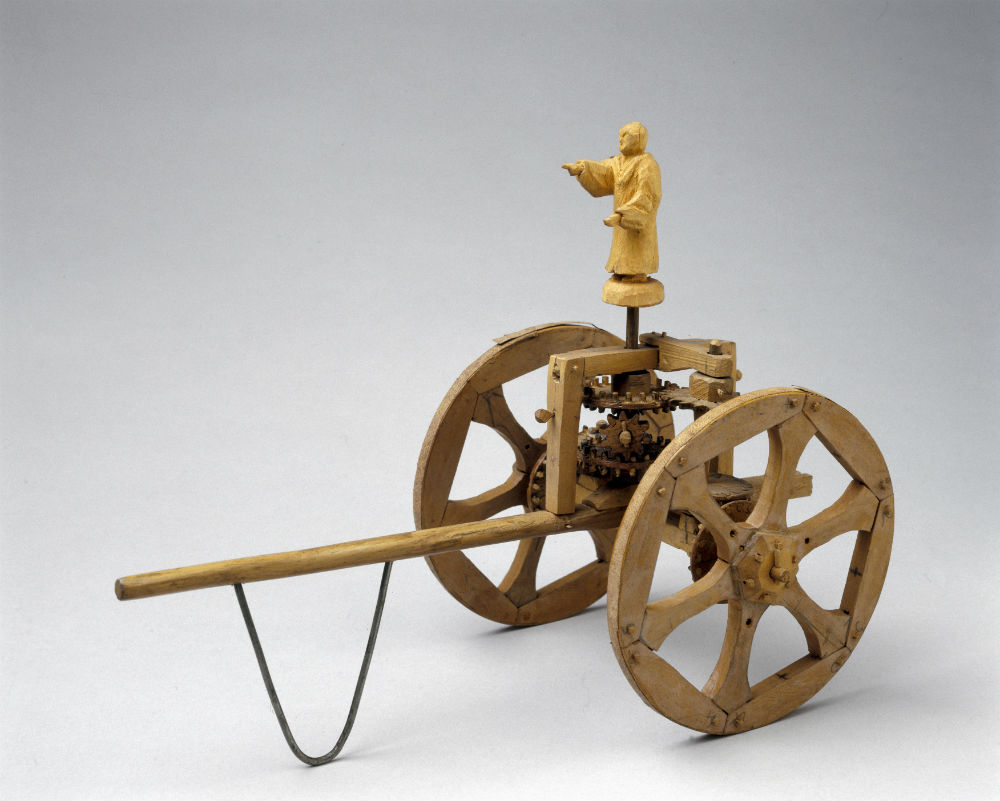
Innovation is a word that is oft-repeated but thrown around too haphazardly these days. Have you stopped to consider the difference between an Invention and Innovation?
An invention is a new development – device, method, composition or process. An innovation is a novel invention that not only provides value, it scales, and is adopted at scale. Innovations are a very special subset of inventions. Moreover, the word “innovations” are often misused to characterize inventions and we should be very clear when using this word.
An invention may or may not provide value, may or may not be novel, may or may not scale, and may or may not be adopted at scale (by the masses)! An innovation will look completely logical in hindsight because it was adopted (not true for all inventions).
A colleague of mine, Dean Kamen used to point out the difference with an example. On his desk at his cutting-edge research and development firm he had a famous Chinese invention – a South Pointing Chariot – of which he knew the history. He would tell of how the chariot would be towed behind horses and had a guidepost that always faced South based on a series of very fine, precision mechanical interconnects, as precise as swiss watch timing mechanisms but in much earlier days. It was used by Chinese Generals to cross the Gobi desert where there were no landmarks to keep navigation straight and where Generals needed to march their armies efficiently and not get lost or arrive in enemy territory. More importantly, while this was a very novel invention, it is not considered an Innovation, in historical terms – but why?
Dean explains the South Pointing Chariot was trumped by a more novel invention, one that was easier to use, and scaled across the masses, where everyone could have their own version of the chariot. This invention, soon to become an innovation was the magnetic Compass, invented elsewhere in China, but nonetheless immediately rendered as the only navigation tool necessary, relegating the South Pointing Chariot to the dustbin of history.
Like the South Pointing Chariot – most inventions look completely mystical in retrospect! This is not so with innovations – the compass looks completely logical in hindsight, and it is still used, although not as widely nowadays because of a new innovation called GPS. Some say the South Pointing Chariot was an innovation because it was used across China for hundreds of years, however, the point here is that the words ‘invention’ and ‘innovations’ are not the same – and it is useful to distinguish between the two word. Meanwhile, there are plenty of inventions that remain isolated or cannot scale and go nowhere or achieve nothing. While that so, inventions are necessary to achieve true innovations.
Sometimes there have to be many inventions or iterations that fail in order to have one that succeeds (if success is defined as widespread use and adoption). It’s important to remember that innovations are inventions too, and the invention must work to scale, yet adoption on a wide scale is necessary to classify the true innovation. I’m sure there were plenty of versions and iterations or sequences of dry and wet compass inventions that did not work on the way to becoming an innovation! Yet, if any one individual iteration were looked at in total isolation, it might look completely illogical in hindsight.
There are also subsets of innovations – evolutionary and revolutionary innovations. Revolutionary innovations are a very small subset because they deliver radical change, disruption, step changes >10X the status quo or more. At SkyLift, we are conscious of the difference between inventions and innovations, including the subtle characteristics needed to drive and create a deliberate path to the latter.
